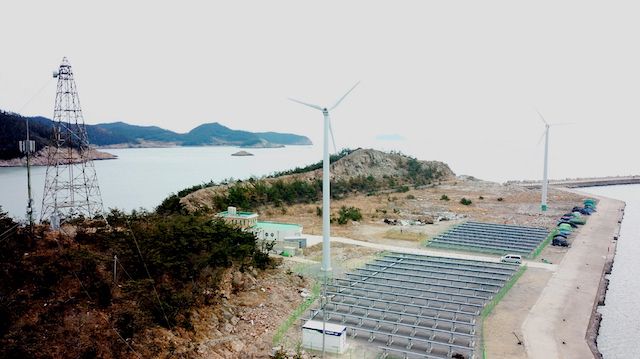
New and renewable energy is expected to take a leap as a major energy source beyond coal and nuclear power plants, with the share of power generation increasing by about 20% from last year by 2034.
On the 29th, the government held a new and renewable energy policy deliberation meeting, presided over by the head of the Ministry of Trade, Industry and Energy, and confirmed the ‘5th Basic Plan for New and Renewable Energy Technology Development, Use and Distribution (New Basic).’
The new basics, which are established every 5 years over a period of 10 years or more, are linked with the’Basic Energy Plan (Basic E)’, the highest plan in the energy sector, to present mid- to long-term goals and implementation plans in the new and renewable energy sector.
The 5th new basic plan is scheduled for this year to 2034, which is the same as the 9th basic electricity supply and demand plan announced earlier (previous basic). According to the plan confirmed on the day, the target for the proportion of new and renewable energy generation in 2034 is 25.8% (renewable energy 22.2%, new energy 3.6%).
According to the 9th electric version, the capacity of new and renewable energy (for business and private use) in 2034 is 82.2 gigawatts (GW). Including Honso Biomass, it will increase to 84.4GW. As planned, the proportion of facilities by power source is expected to be in the order of renewable energy (40.3%), liquefied natural gas (LNG, 30.6%), coal (15.0%), and nuclear power plants (10.1%).

The government predicted that renewable energy will emerge as the main energy source during the fifth plan period. Therefore, it is planning to systematically prepare a systemic contribution and market system at the level of traditional power generation beyond the supply-oriented policy.
First of all, we will introduce a license integration organization (One-Stop Shop) in the wind power industry and expand the site rental period from 20 to 30 years according to the increase in the life of the facility. In addition, it is also trying to improve the licensing and licensing regulations, such as rationalizing the separation distance regulation.
Next year, it will also build a platform that provides information on idle state-owned areas suitable for new and renewable energy. To improve profitability, we will reorganize the new and renewable energy supply obligation (RPS) market, focusing on long-term competitive bidding contracts, and increase the duty ratio to 40% by 2034.

Various implementation means will also be presented to enable enterprises and public institutions to implement RE100. In addition to the recognition of GHG reduction, it plans to expand participation targets by strengthening incentives such as green guarantee support and’RE100 labeling’.
By expanding investment in research and development (R&R) of hydrogen materials, parts and equipment, we will foster 1,000 hydrogen specialized companies and 100 energy innovative companies with sales of 100 billion won or more. The amount of hydrogen subsidiary, deputy, and chief R&D investment will also gradually increase to 20 billion won in 2022, 1,000 words in 2025, and 200 billion won in 2030.
Related Articles

Will’IGCC’ be expelled from new energy? Renewable energy law amendment proposal

Renewable energy is’clear’, greenhouse gas is’thunderstorm’… Looking at the sustainability indicator

Speed up carbon neutrality… Intensive fostering of renewable energy, hydrogen, energy IT

80% of renewable energy in 2050… Coal power generation is ‘0%’
It will also localize core technologies such as high-efficiency solar cells, ultra-large wind turbines of 12 megawatts or more, mass production of green hydrogen by 2030, and hydrothermal energy. The market for high-efficiency and eco-friendly products will also be expanded through the advancement of the lowest efficiency system and carbon certification system.
Young-joon Joo, head of the Energy Resources Department of the Ministry of Industry, who presided over the new and renewable energy policy council on that day, said, “With the establishment of the 5th new basics, we will closely support the growth of new and renewable energy as a leading energy source. “We will also systematically prepare for carbon neutrality in 2050.”
